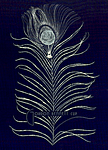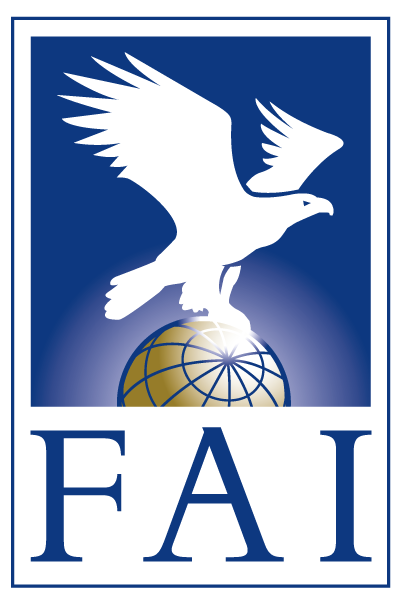34th Coupe Aéronautique Gordon Bennett
Lech, Austria, September 2, 1990

Results
| Rank | Pilots | Country | Score | Duration | Landing |
|---|---|---|---|---|---|
| 1 | Josef Starkbaum Gerd Scholz |  AUT AUT | 692.50 km | 33:20:00 | Schiave di Abruzzo, Pescara (ITA) |
| 2 | Lawrence Hyde Fred T. Gorell |  USA USA | 605.60 km | 19:43:00 | Vrpolje, Sibenik (F_YUG) |
| 3 | Karl Spenger Christian Stoll |  SUI SUI | 264.40 km | 14:07:00 | Navellara, Reggio Emilia (ITA) |
| 4 | Alan Fraenckel John Stuart-Jervis |  ISV ISV | 243.20 km | 21:02:00 | Castel San Giovanni (ITA) |
| 5 | Silvan Osterwalder Rolf Sutter |  SUI SUI | 205.10 km | 09:07:00 | Sandrigo (ITA) |
| 6 | Helma Sjuts Alfred Derks |  GER GER | 197.90 km | 10:15:00 | San Peretto (ITA) |
| 7 | Volker Kuinke Jürgen Schubert |  GER GER | 187.40 km | 09:07:00 | Recoaro, Schio (ITA) |
| 8 | John Mike Wallace A.M. Fairbanks |  USA USA | 178.80 km | 08:30:00 | San Leonardo (ITA) |
| 9 | Stefan Makne Grzegorz Antkowiak |  POL POL | 176.80 km | 10:17:00 | Ome (ITA) |
| 10 | Alfred Nater Otto Anderegg |  SUI SUI | 152.90 km | 07:32:00 | D Ogna (ITA) |
| 11 | Thomas Lewetz Silvia Wagner |  AUT AUT | 131.80 km | 08:51:00 | Foppolo (ITA) |
| 12 | Thomas Fink Günter Oberseider |  GER GER | 121.20 km | 08:58:00 | Carona (ITA) |
| 13 | David Levin Frank Rider |  USA USA | 106.90 km | 06:50:00 | Ponte di Legno (ITA) |
Book Article
From the Book: Die Gordon Bennett Ballon Rennen
(The Gordon Bennett Races) by Ulrich Hohmann Sr
Start: Lech am Arlberg, Austria September 2nd
Swiss balloon pilot Rolf Sutter, competitor in that race, had written a report, containing some constructive ideas. Let’s him describe first:
Can you imagine the atmosphere, if a whole village supports a balloon event? If the population is more worried about the weather than the official meteorologist? Lech am Arlberg, situated at 1500 meters above sea level, was host for the second time. Not only the wonderful launch field in the middle of beautiful nature, but also the support of the whole population was reason enough for the organizers, to choose this village in Vorarlberg for a second (perhaps a third?) time.
So the organizers (Team Polar from Voesendorf) could rely on proved and well known structures. Even before the race great work had been done: Romania, Czechoslovakia, Hungary, Italy, Poland, Yugoslavia, Bulgaria and even the authorities responsible for the ADIZ gave written permission allowing balloon flights in their territory.
Was that the reason, why championship director Helmut Kocar could welcome all the pilots, observer, volunteers and friends with a little smile at the welcome party on Friday? The next day however, he had to turn on all his charm of Vienna style to declare the meteorological situation, given by meteorologist Dr. Herbert Pümpel, as unflyable. The next briefing was set to Saturday, 1 p.m. Kocar struggled hard, to make a decision, free of an advantage or disadvantage for anybody.
On Saturday afternoon the clouds became fewer according to Pümpel’s prognosis, but only for a few, too few hours. But there was hope grew for Sunday morning. The detailed explanations of the meteorological situation said to expect a launch on Sunday morning. So the balloons should be inflated in the evening and during the night, a final decision should be made at 8 a.m. next morning. More prolongation of the launch window was impossible. Why are there not more days reserved to fly such an international event?
Starkbaum/Scholz from Austria and two or three other crews decided to have their balloons inflated. Levin/Rider from the USA, for the first time with a balloon of the same construction as the five time winners from Austria, also decided for an inflation at night. With the rain, it became calm on the launch field. Do we really start tomorrow? And where will the voyage end? Probably, the sky of Lech was never so much inspected as at this night of Saturday to Sunday, September 2nd, 1990.
At 5 a.m. in the morning, only a few single clouds were left, but almost no chance, to make telephone contact with the meteorologists at the airports of Munich, Innsbruck, Vienna, Milano or Zurich, the telephones were overburden. (By the way: A warm thank you to all meteorologists, your prognosis had been absolutely right!)
Soon the friendly talk with other competitors should also come to an end. Briefing at 8 a.m.: Weather sufficient for a launch until 11 a.m., it had to be launched before the next thunderstorm clouds would approach. Decision (with a slightly worn out charm of Vienna style) to launch from 9 a.m. on. Everybody started to rush, everyone, who had not inflated yet, wanted to have gas, but the inflation team of the gas trailers wanted to have breakfast. And why does our Swiss teams still want to do everything without a coach?
Now confusion started. Minutes of anxious waiting for gas, other anxious minutes. Is there time enough to copy the wind trajectories to the maps? Where is the jury to seal the barographs, where are the safety inspectors to check the radios, transponders and last but not least the electrical supply? And damn, just at that moment, the guys from the TV station wants to have an interview, when we had not yet prepared everything.
It is not the coach, who should care for all of this. Even Joschi Starkbaum gets nervous from this hurrying. Always calm Levin looses orientation in his own chase car, and the balloon of Fink/Oberseider almost lifts off without pilots and basket. The question is asked, why should not a coach take over some general functions and specific duties.
Meanwhile, it had become 9:30 a.m. and under the sounds of the national anthems the procedure of launch began with the balloon Austria I. Until balloon number 6 was to be launched, the time between the launches became longer and longer.
While Wallace/Fairbanks, Hyde/Gorell (both teams from the USA) and Spenger/Stoll (Switzerland) – whose light build net had torn at several places during inflation and had to be repaired first with the help of a ladder – were still equipping their baskets with material, the rest of the competitors had already launched one after the other. But ironically, up to one hour after launch most of the balloons still stood above the launch field in an altitude of about 3000 meters above sea level watching each other until Sjuts/Derks from Germany were the first to discover wind from 70 degrees with 15 knots at 3500 meters above sea level and went away. Follow them as in a hare and hound competition or being an individual and try to find another way? What was with the thunderstorms in the south? And what did the insistently words of Dr. Pümpel mean? Well, up there in the air, the racing fever catches everybody. Soon the sound of their own national anthem can’t be heard from the ground anymore and also the words of Dr. Pümpelwho had said farewell to each crew with a handshake again warning them from the thunderstorms in the south have faded away.
So Lewitz/Wagner (Austria), Kuinke/Schubert (Germany), Nater/Anderegg (Switzerland) und Fraenckel/Stuart-Jevis (American Virgin Islands), start chasing 71 year old German school teacher Helma in the balloon D-CONTINENTALE.
Experienced Levin/Rider (USA), being in the race for the third time, stay low in the valley and wait. What is their plan? Makne/Antkowiak (Poland) know about their heavy balloon and follow the others only slowly below 3500 meters.
Osterwalder/Sutter (Switzerland) leading the way for Hyde/Gorell (USA) who had now also launched in D-ASPEN flying up to 5000 meters, there heading towards 180 degrees at 25 kilometres an hour. After Spenger/Stoll in balloon JURA had also launched shortly before noon, the chase crews and observers take to the road. First position reports can be heard from Arosa, Chur and St.Moritz, that’s the reason why so many cars with a balloon trailer enter Switzerland at the border station of Buchs.
There is quite a good discipline on the radio. "Do you also need as much sand as I do?" "Do you see the cumulonimbus?" No matter if in Austrian, Polish, English or Swiss language, the frightened questions sound all the same. Soon one can watch 11 competitors moving towards the Engadin, while two try to steal away to the southeast at more than 5000 meters. Nater/Anderegg (Switzerland) in balloon RENTSCH try to fly low in the Swiss Rhine valley. They hope for a local wind, called "Bise", leading them to the high Alps, that may be seen in the cloudless sky of Switzerland. But descending, they don’t make much speed, so they decide to stay high, were they see two thunderstorm clouds right ahead of their track. But bearings indicate, that their flight may pass right in between them.
In balloon HB-BFC JURA the pilots gets wind information from a Balair airplane from Basel. A world champion in ballooning, who flew from Zurzach, frequently announces his heading at 270 degrees. Balloon POLARSTERN has eager discussions with Zurich Info about the weather in the South, while Levin/Rider in a similar constructed balloon try to catch their chase crew on the radio, because they want to land at Sondrio.
Then anxious minutes follow: For the Austrian defender of the title, the variometer indicates a fall of 5 meters per second, the needle is at the end of the scale. Each pilot has two bags of sand ready for dump as they watch the situation. A few meters next to the wire of a mountain cableway the POLARSTERN stands still. Without dumping any ballast, the balloon stays stable and flies westwards in the valley of the Engadin. The wisps of clouds all around move in the same direction. That’s good, so they keep this position. Over the mountain of Maloja with the evening sun throwing its last beams to the massive mountain of the Bernina, they would make some wonderful pictures. Then the five times Gordon Bennett winner climbs back to 3000 meters and is astonished about the radio silence and the loneliness in the air. Where are the other balloons?
In the area of Bergamo, other competitors are also wondering. But at that time, they mostly wonder about how just a few minutes may become an eternity. The cumuli and cumulonimbi, observed by Nater/Anderegg pull so strongly that even several bags of sand they sacrificed could not keep them away. They fall into the clouds, with snow, hail, rain and the needle of the variometer at the end of the scale makes them expect unpleasant things. They finally land in thick fog having to leave everything behind and walking for ¾ of an hour until they find a four wheel drive car with its owner, who brings them in two hours to the next village on roads which are more like the bed of a creek.
What are the Polish competitors doing? They land without seeing anything or knowing, where they are, it is absolutely dark. When deflating the envelope, it falls on the roof of a house creating some scratching noise and awakening the sleeping inhabitants of the house. Shocked, they come to see, what’s going on in the complete darkness. Everybody, who is shocked, will probably use his native language in his first shout. "What are you doing there?" made the pilots listening twice, because they heard these words – in Polish language! This night became a survival party among balloon pilots and Polish living in the exile.
Thunderstorms on the south side of the Alps, even in the plain of the river Po. When does this ever happen? Osterwalder, who had done more than half a hundred alpine balloon flights, had never before seen a thunderstorm in Italy. Anxious minutes also for him when he made his SOLVAY falling from 5300 meters through snow and rain down to 2600 meters, where he came out of the clouds over a mountain pasture. He manages a smooth low flight for two hours, providing him at last the kilometres necessary, to get ahead of all the other balloons caught in the thunderstorm.
Did Spenger/Stoll take profit from their late launch? They decide to fly the night. But more and more lightning and flashes illuminate the night. So they also have to look for a landing place at night.
"Do you know, how the heart beats? Did you know, that one can see the heartbeat even through three sweaters you have on?" Fred Hyde is a doctor and talked about how he had to endure frightening moments with his heart. Over the Adriatic Sea, over the water, running out of ballast. When Gorell sees land under the basket in the early morning both pull the vent line and are lucky to set feet on Yugoslavian earth.
But who is still in the air? This question is also asked by the camera team of the ORF. They even manage, to be at the landing of the repeat winning team and to film it. For the second time a victory three times in a row! That has never before happened at a Gordon Bennett race.
What do you think? Starkbaum/Scholz have additional information, others don’t have? Both take profit from things, other pilots can’t find out? Yes, true. The new victory has the reason, that they have something more. But not what you think!
Scholz is a subtle gas balloon pilot, he understands his partner without a single word. Starkbaum proves his subtlety in a gas balloon by his numerous hot air flights. And both prepare for every competition mentally and organizationally. They also take profit from a personal milieu, only champions have. But ask them yourself, you will see, they also only use water for cooking.
Of course, the lightly build balloon allows more ballast. But how did the balloon look in the morning light after inflation? – Like a plum. Of course, Starkbaum’s job offers an advantage in the air. But information about the wind from pilots of airplanes are useless, because they fly at altitudes, where there are no competing balloons. Of course the professional language of the radio is of an advantage, but this can be learned by the others as well if they are interested. Of course, also their coach, working in the background, has his influence. But why don’t we learn, that a coach may have a good influence on teamwork? Of course, the repeat winning crew took profit from their instruments. Yes, they were equipped with the newest navigational aids, but they did not rely on them alone, they also used the normal instruments and in addition had to carry with them a heavy video camera and tape recorder.
I think also Starkbaum/Scholz had been nervous at launch as never seen before. Also, both had more weight than in the previous years. Also, both had to face the same frightening minutes as all the others and did not believe after the landing, that they had won again. So all the others are more or less second winners.
Some more critical remarks about the organization. In former times, better service was provided. Chase crews were not given wrong information, leading to a 1200 kilometres trip by car for nothing. Also a map with little flags, showing the provisional position reports and landing spots was hung up somewhere. But in former times, there were also pilots, who paid a drink for the observer and did not leave him back somewhere on a road in Italy. This incident should normally lead to a severe penalization.
Rolf Sutter
Some explanation must be added to the last remark in the previous article.
The Balloon Federation of America had nominated somebody completely unknown to Europeans as competitor. This gentleman obviously wanted to use the Gordon Bennett-Race to improve his publicity. He showed up with a crew of 15 persons including journalists and cameramen, who registered every move and every word of the pilot. It came out, that this gentleman was a candidate for the election to a political committee in the USA and obviously wanted to demonstrate to his voters what a tough guy he was. The whole gang chased him but did not manage to film the landing. At least, they found a half empty balloon in a backyard at Verona. So more film takings and interviews.
Money seemed not to be important. But – to pay the lodging and food for the observer, as it is required by the rules, was not in the budget. When the observer then became a little "loud", they simply left him back on the landing place in Italy and drove off!¼ A German crew, who just happened to pass by and recognized the stranded observer, took him back home.
The 34th Gordon Bennett Race is over. A race, that will have a special place in the history. The sixth cup came to final possession, in the shortest time possible, three years after donation by the own nation. Did this happen before? We have to look back to 1932, to find something similar. In 1932, the cup, donated by Henry Ford in 1929 was finally won by the Americans Settle/Bushnell after three races, interrupted by the world economic crisis of 1931.
Joschi Starkbaum and Gert Scholz won (in their seventh race) for the sixth time in an uninterrupted row. Was there an example before? Unforgettable Ernest Demuyter from Belgium had gained six victories between 1920 and 1937, but with four different co-pilots (Labrousse, Veenstra, 2 x Coeckelbergh and 2 x Hoffmans) and needed 18 races for this. Demuyter was considered most successful balloon pilot of all the times until today, Starkbaum/Scholz have overtaken him. So it seems to be more the small, weak ballooning nations, who create outstanding pilots, even if there was an Van Orman (USA), Bienaimé (France), Schaeck and Armbruster (Switzerland) or Erbslöh and Gericke (Germany), many others who could also be mentioned here.
Was the 34th Gordon Bennett a great race? A race, that could keep up with the others in its drama, the organization, the results? – I think yes, there were great demands for all involved in the race. First of all, meteorologist Dr. Herbert Pümpel must be mentioned. Until Thursday before the planned launch, his job seemed to be easy, almost unnecessary. A perfect summer, the weather could be called. But then the disaster came! "I can’t tell you, when this damn mass of cold air allows an improvement of the weather", was his standard prognosis. On Saturday, the clouds were almost down to the launch field, a flight was impossible. "If there is an improvement, then it will come quick and won’t be of a long duration" was the crucial information for championship director Helmut Kocar. He permitted inflation, ordered four men of the fire brigade to guard the balloons over night (four because that’s the number needed to play cards), so that a launch would be possible without further delay if the weather window would open. It was not far away from a final cancellation, it would have been the first one in the history of these races.
So the launch of a Gordon Bennett Race was postponed, this also had never happened before for weather reasons (even if it would have been appropriate several times). A postponing of the original date had already happened in 1907, otherwise the housewives of St. Louis would not have been able, to cook a warm dinner for her husbands on Sunday because of low gas pressure. In that year, the balloons launched on Monday evening, this year on Sunday morning.
The drawn sequence of launch became a little mixed up, some balloons were still being inflated, when those who were ready were already carried to the launch platform. Two teams also tried to be tricky, to delay their launch. They may have thought, the weather would still improve, but their calculation turned out wrong. Starkbaum/Scholz went off first for this voyage, they saw (and heard) from upcoming thunderstorms on the line Engadin – Milano, "parked" their balloon downwind in a valley, and flew on, when most of the others had overtaken them and had to land because of the thunderstorms. First to launch of the Americans was Fred Hyde and he caught a drift to the Southeast, crossed the Adriatic Sea in front of the thunderstorms and landed in the area of Split on Monday morning. He was the only one who took profit from the opening of the borders of the states on the Balkan (except Albania).
The flight of the other balloon went to the South, only three of them flew to the night. Karl Spenger’s balloon JURA had a damage on its net before launch and the fire brigade had to come with a ladder to repair it so he could not fly off before 11:45 a.m. With this balloon he did not want to fly through the night. After having crossed the Alps he came back to earth in the Reggio Emilia a little before 9 p.m.
Alan Fraenckel and John Stuart-Jervis were the surprise in the race. They had a brand new balloon, light fabric with a net of plastic and a lightweight basket, but the material was not important at this race. The reason, why nobody thought they might make a good result, was their lack of experience. It was said that Fraenckel had four and Stuart-Jervis only two gas balloon flights before. Their fourth place is remarkable under these circumstances.
Except the four teams mentioned above, all the others landed right in time, before the thunderstorm broke out. Nater/Anderegg and Levin/Rider had some problems with the recovery of the balloons, but they could be solved with the use of mules and helicopters. The distances they achieved was more a result of the time of launch and the next possibility to land than of the courage or skill of the pilots. No damage to persons or equipment, that was the most important.
Thomas Fink describes his flight:
The flight was extremely unstable: The tops of the clouds rose higher and higher and they went up and down. Günter had to watch the variometer and to shovel sand permanently. After crossing the Austrian/Swiss border south of Schrunz, the wind came more and more from the North, we flew above a closed layer of clouds. When the clouds opened up again, we were directly over Davos. The flight went on in the direction of the Upper-Engadin. The bulging of the clouds became still higher, the flight still more unstable and the ballast less. At an altitude of 3000 meters over the airfield of Samedan we almost stood still. Above the Piz Bernina in our flight path stood dangerous looking cumulus clouds. Behind them, in upper Italy, one could already see the anvil shaped tops of the thunderstorm clouds. What should we do? "Park it" in the Engadin and waiting for better weather or continuing the flight on? We decided for the latter, dumped a few shovels of sand and took up speed again. We flew over Pontresina and the glacier of Morteratsch directly toward the Piz Palü. We crossed the summit at 4:15 p.m. Without the mountains of clouds ahead, we would enjoyed this spectacular nature below us much more.
A little time later we climbed at 1 meter per second up to 4800 meters, and a cloud overtook us from below! A few minutes later, it went down like in an elevator. We fell for 2000 meters, until we saw the ground in the picturesque valley of Togno. No faster than walking speed, we flew along the valley heading south. So we had time, to count the ballast left and to think about our next steps. In the South, it still looked like thunderstorms. To reach the plain of the river Po, we had to cover another 75 kilometres, the track would lead over several mountains, more than 3000 meters high.
So the weather looked very bad in the south, which was also reported to us by other balloons so we decided to land at 7 p.m. The landing was absolutely soft on a lawn in 1600 meters, about 200 meters next to the end of an alpine road. We deflated the balloon, then I walked off for a telephone. After 45 minutes, I came to the little village of Bondone. They had no telephone there, but some people with a car. My lack of Italian language was more than equalized by the helpfulness of the mountain farmers. In a rusty Seat Marbella they brought me to Corono. There was an inn with a telephone.
Starkbaum/Scholz had waited. The thunderstorm was over and now at night they wanted to fly to Italy. Milano Info told them, that ballooning at night in Italy was not permitted, but Milano tower accepted their flight plan. But they insisted for information on how long and to which place the flight was planned. With " 24 hours to Brindisi", they were satisfied. Now the two pilots only had to navigate with care and not to approach the coast too early.
A camera team of the ORF was on the chase. They wanted to film the landing, whatever happened. Maybe, they haven’t taken enough films with them, or they needed sufficient sunlight, from Monday afternoon on they asked for a landing. They made the chase crew radio to the balloon, that all the others had already landed, the one with the longest distance was at Split in Yugoslavia. But to trust a radio information? – Bad surprises with this had happened in former years. – The wind increased and turned further to the West. Brindisi and the gulf of Tarent was still far away but ballast was sufficient for a second night. What should be done, having the Adriatic Sea ahead at the gulf of Manfredonia in the middle of the night?
"We will not fly the second night", it came from the radio. "Come to the valley of Sangro, there we might land". Indeed, after a flight of 692 kilometres in 33 hours and 20 minutes, chase-crew, observer and camera team were present at the landing. At Castiglione they celebrate the flight, being almost sure, to have won again. German observer Walter Benedikter from the Alpine Balloon Club in Sonthofen, having flown the Alps as pilot by himself for several times, was lucky to be present there.
Friday, September 7th, 1990. In the hotel "Arlberg" at Lech the competitors meet for the solemn awards banquet. The tourist office of the well known village of winter sports and the major sponsor make the ceremony an impressive festival. The sixth Gordon Bennett Cup is now finally in Austria, a country, this crystal ball never had to leave. A seventh cup will follow, that’s sure, because Starkbaum/Scholz want to dispel the last doubts, that they are the best pilots of the world in gas ballooning (and Demuyter is only caught up to, not overtaken).

